This week we covered the AMD EPYC 7000 series launch in Austin, Texas. This launch had a decidedly different feel from the last launch we remembered in the server space for AMD. AMD was able to tout several major hardware vendors, major software partners and several of the top hyper-scale firms as being onboard at launch. Further, AMD’s partners had working demos and platforms available to experience. From a market health perspective, this was great to see.
Case Study in a Bad AMD Ecosystem Launch “Seattle”
Several years ago we covered the launch of the AMD Opteron A1100 series, also known as “Seattle”. I brought this up to a few AMD executives during the launch and in return was greeted by smiles I believe would roughly translate to “darn I thought nobody would remember that.” The quick summary is that the AMD Opteron A1100 series was a low core count ARMv8 product targeted at the microserver market. Intel countered with Avoton/ Rangeley and Broadwell-DE and essentially killed a huge swath of the general purpose microserver market AMD and others were targeting.
The AMD Opteron A1100 series should be a case study in the CPU market around what a poor server product ecosystem looks like. We even wrote an editorial to this effect.
Here is what the hardware partners slide looked like:
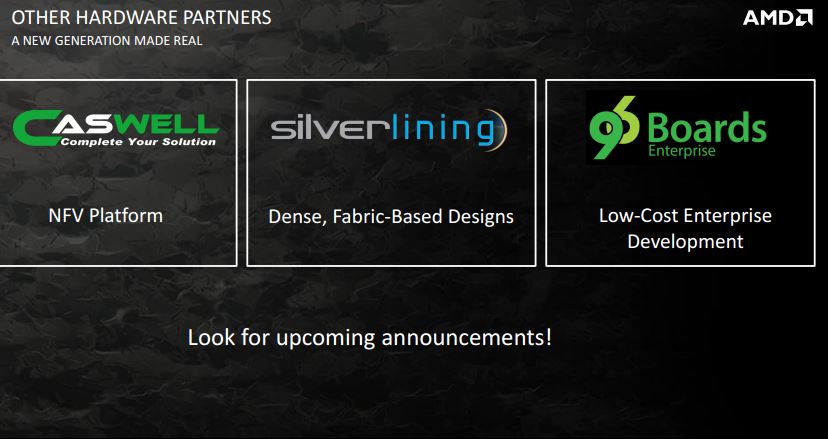
Here is a quote from our launch piece:
“Looking for hardware? AMD has three hardware partners. One might note that there are a few names one might expect to see missing. Namely vendors like HP Enterprise, Dell, Cisco, Huawei, Supermicro, Lenovo, Quanta, Winstron and etc.”
Likewise here were the launch software partners.
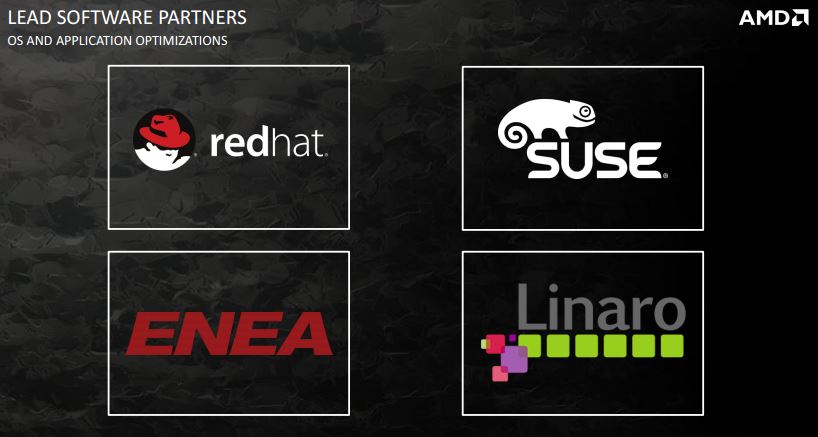
We had about an hour on an AMD Opteron A1100 platform and it was about what one would expect, but it did not have a great feature to compete with Intel like the Cavium ThunderX does. To this day, we still have never had an AMD Opteron A1100 in the lab.
The AMD EPYC 7000 Series Launch Ecosystem
AMD held its launch event in Austin, Texas that we attended and the contrast could not be starker. AMD had HPE, Dell and Supermicro on stage.
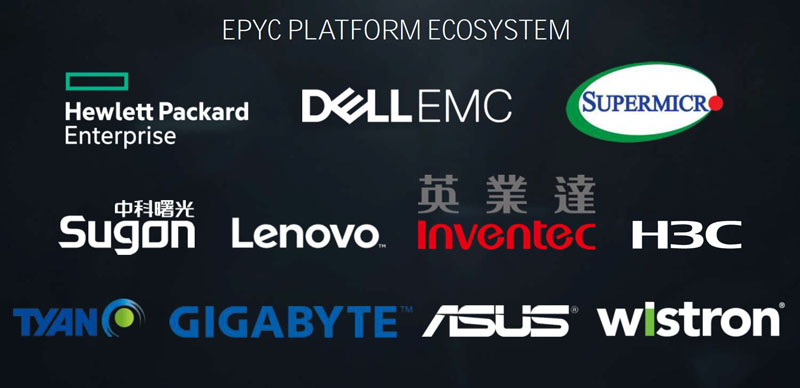
It had Lenovo, Wistron, Tyan, Gigabyte, ASUS and others present showing off designs. Beyond the server makers Mellanox, Samsung, and Xilinx were present supporting the launch.
HPE started off with a NVMe Cloudline server with a single socket, 8 DIMMs and 24x NVMe SSDs that also had room for an additional NIC:
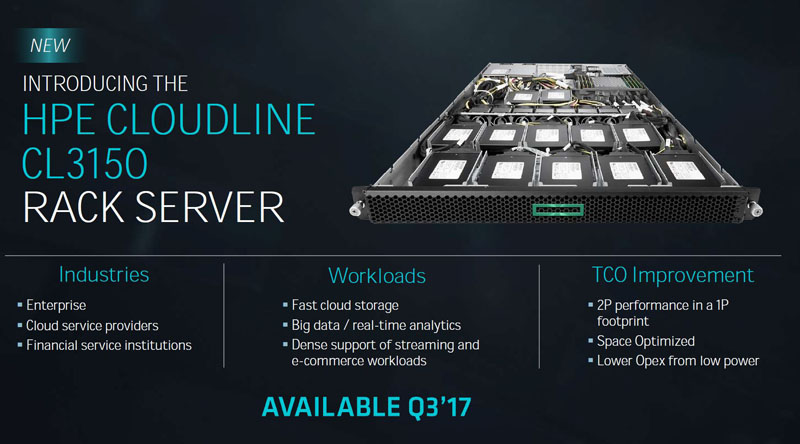
While the HPE Cloudline is not a standard ProLiant server (no iLO for example), Dell EMC countered with a PowerEdge 14th generation offering:
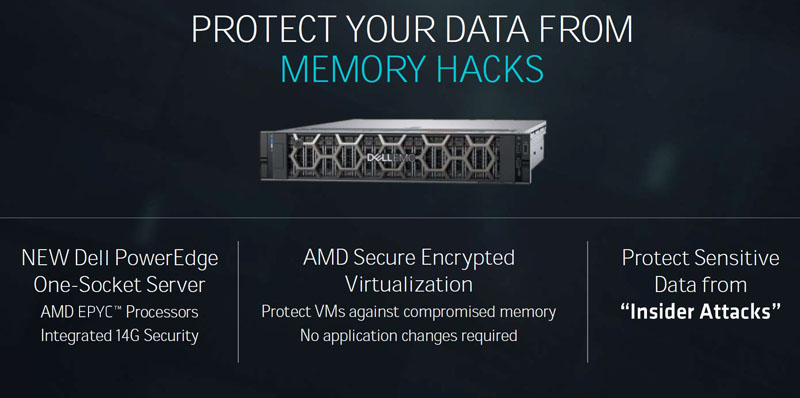
Lenovo was holding its big launch event on the same day as EPYC’s launch in Austin. This certainly took some of the thunder from AMD’s event and Lenovo was not on stage. Supermicro, predictably had many designs on display instead of just 1-3 like other vendors:
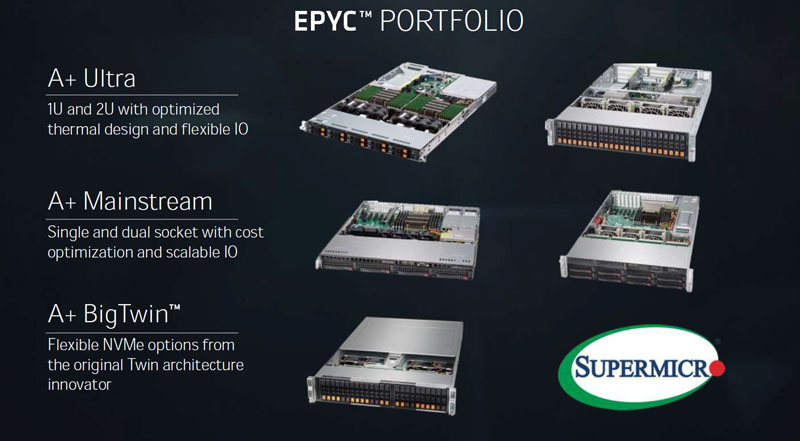
Granted, there are a few large names we knew would not be on the launch list (for example QCT) but having large vendors, on stage with launch day support and physical boxes is a sharp contrast to the AMD Opteron A1100 series launch. One must remember that the relationship between HPE, Dell, Lenovo, and Intel is very strong. Here is what the hardware vendor slide looks like for EPYC, compare that to “Seattle” and the difference is striking.
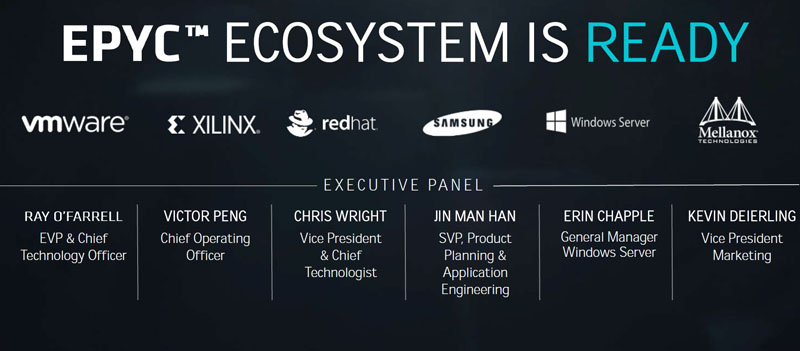
In terms of broader software and service provider support, there is a much larger presence. Microsoft was on stage with Azure and its OCP designs, but also with its Windows Server family support.
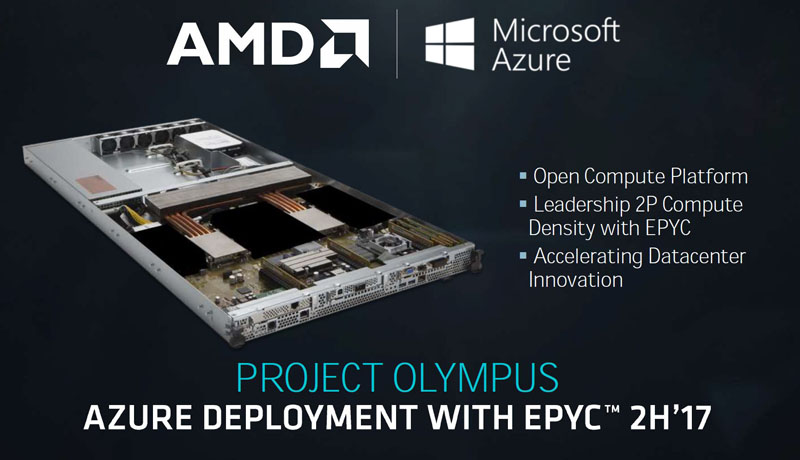
RedHat was present and we know that Ubuntu 17.04 will support EPYC. Baidu was on stage voicing support for the high memory/ high PCIe lane count design of the single socket product.

Overall, we expect systems to start shipping in quantity in late July or August based on our conversations with various vendors. AMD will let you know they are shipping and vendors are building hardware but it seems like the average customer is still a month or so away from getting hands on the hardware post launch.
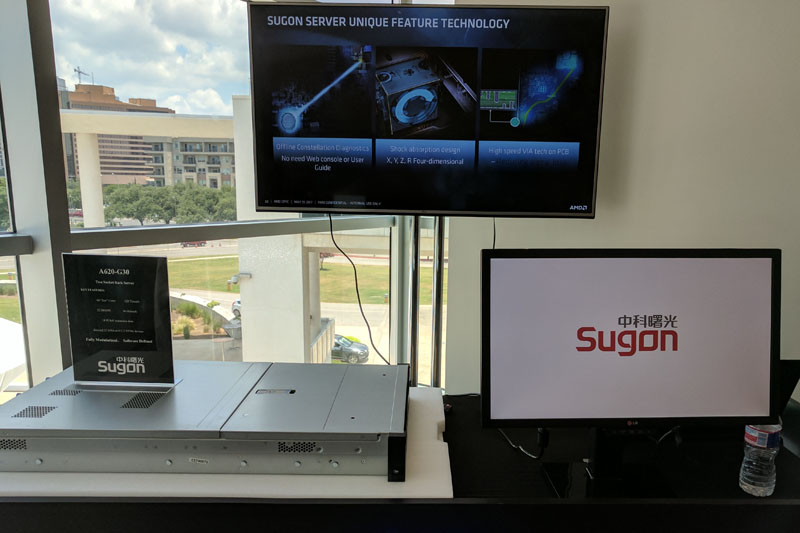
While we would have liked to have seen more hardware at launch, there were so many vendors with different takes on platforms that something interesting happened. The vendors were looking at each others’ designs and saying there would be something similar coming. Essentially, AMD has started vendor competition at launch for designing and building better platforms. If we use the AMD Opteron A1100 series launch to contrast, we could not even find hardware, let alone have choice and competition in the market.
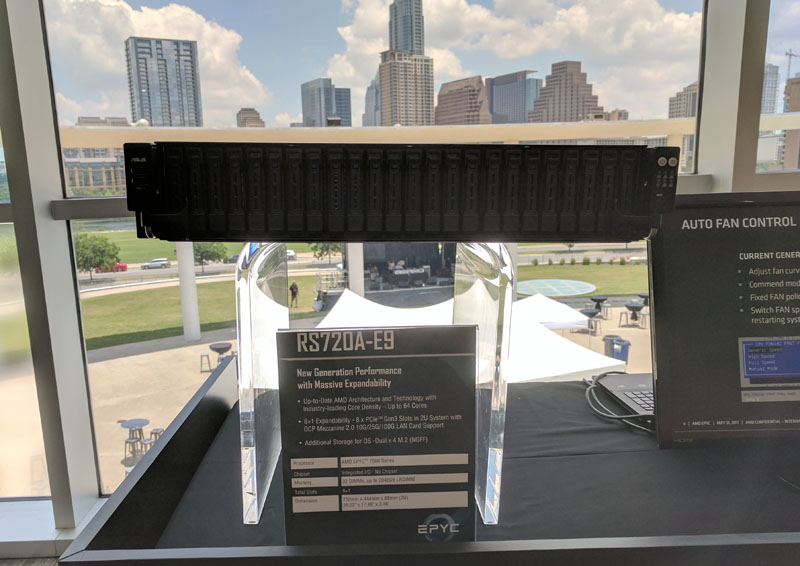
AMD still has a lot of work to do. We have an idea of how big the Skylake-SP ecosystem will be at launch and all of the hardware vendors missing today are going to be onboard with just about every design imaginable at launch. Likewise, every major software vendor is going to show support. AMD’s launch while impressive still shows signs that it is an upstart challenger (despite the company’s heritage) rather than the establishment in the server space.
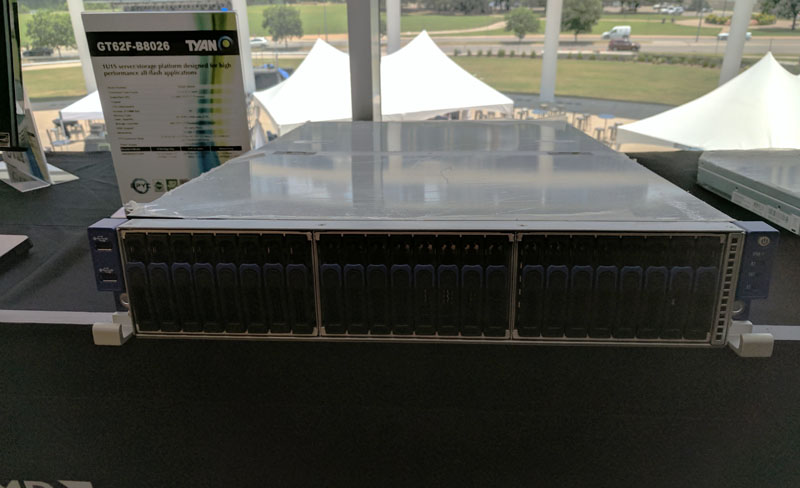
Still, there are design areas that AMD is simply going to win in this upcoming generation for the “Summer of Servers 2017.” One prime example is in RAM capacity. Using relatively inexpensive 32GB RDIMMs one can hit 512GB/ socket without heading into the much more expensive 64GB/ 128GB LRDIMM territory. Likewise, if you want to bring your own NICs (e.g. with Mellanox networking), the PCIe lane advantage AMD brings to the table is not something we expect Intel to match in this generation. Software-defined storage vendors are looking at the AMD EPYC platform with great interest as the PCIe connectivity is stellar.
Final Words
AMD knew it needed to deliver more than a chip. It needed to deliver an ecosystem, and get out in front of the Intel Skylake-SP train. AMD is not going to win 90% market share with this generation. The Intel Skylake launch partner list will be the who’s who of hardware and software vendors. At the same time, when we compare EPYC to Seattle, there is an enormous difference in terms of what the launch ecosystem looks like.
While AMD launched the product, and is shipping to OEMs, the average corporate buyer will have to wait some time before they can purchase systems in Q3 2017. We do expect Intel will launch Skylake before AMD EPYC systems are readily available. Competition is good for the industry and it is great to see that AMD has a competitive offering once again. It is even better that AMD has not just an offering but an ecosystem of partners ready to ship and support users who switch from Intel this generation.

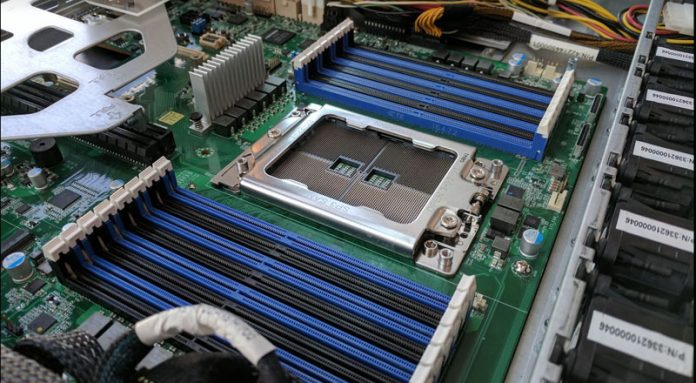



So on the single socket system one could split the 32 lanes per CPU between NVMe storage and networking and have decent RAM cache as well, which would eliminate the problems inherent in NUMA.
128 PCIe lanes in both 1P & 2P configuration
“RedHat was present and we know that Ubuntu 17.04 will support EYPC”
EYPC, cute typo :)
“Software-defined storage vendors are looking at the AMD EPYC platform with great interest as the PCIe connectivity is stellar.”
What about normal enterprise / database servers, would they ever need the 128 lanes, or is that just overkill?